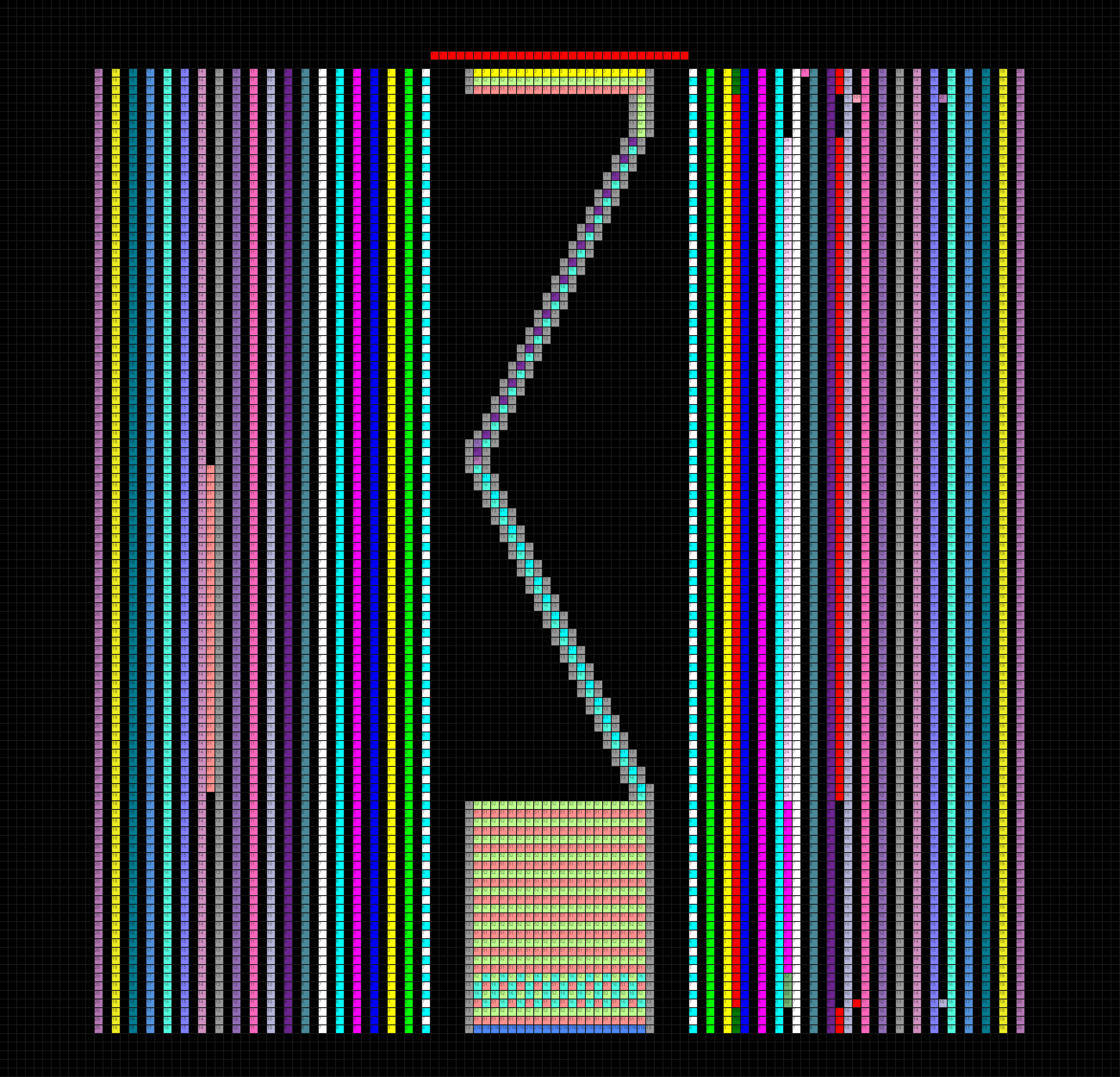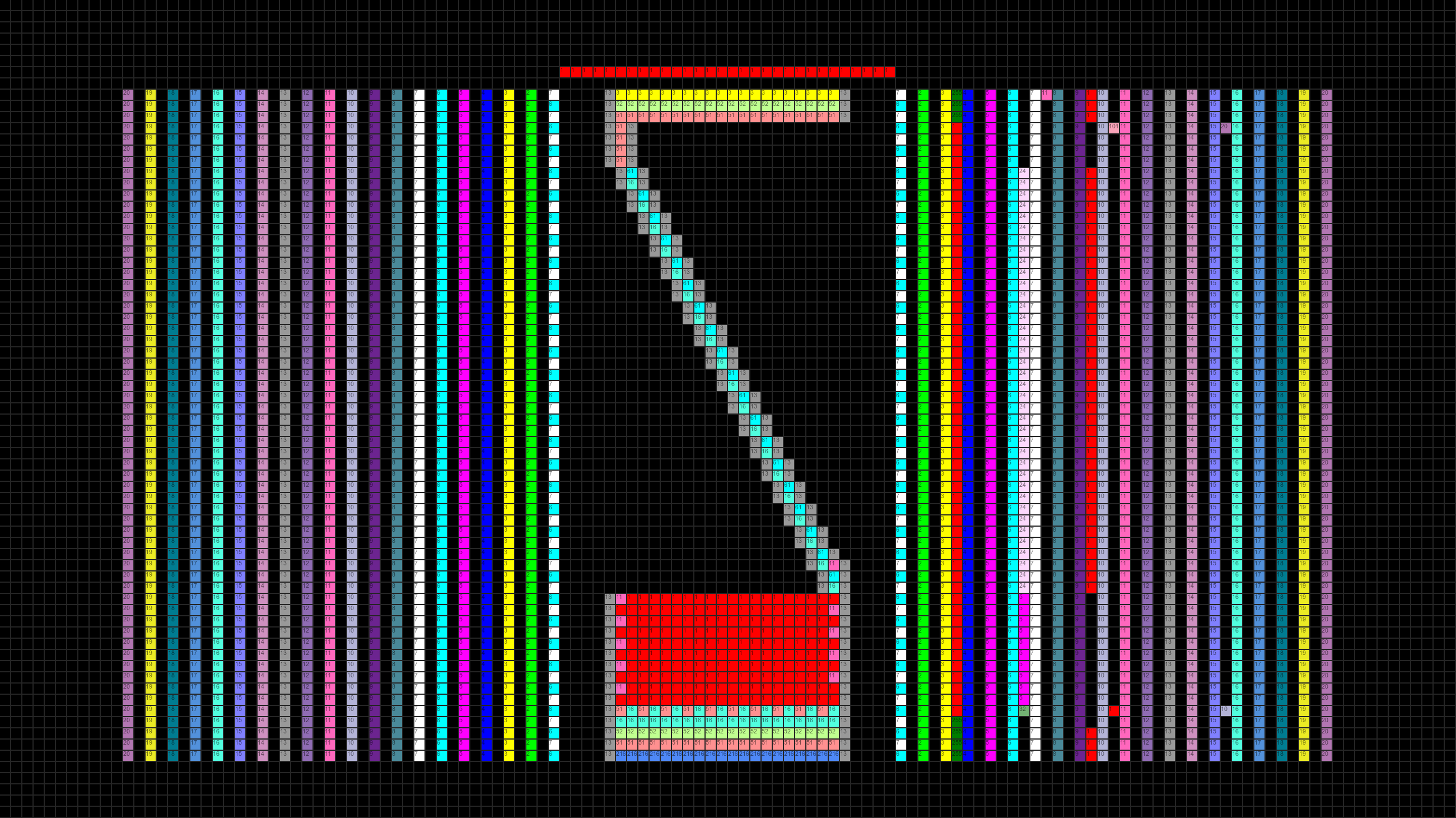# Casting yarn on/off the needles
Special procedures are necessary to cast yarn on the needles and cast off them.
The main reason is that a knit stitch only works if there is already a previous loop on the needle.
If there is not, then the result is something more similar to a *tuck* operation.
When casting off, you can technically just drop the loops, but then the result will likely unravel and nobody likes that (although it'll be fine for this week, and you can manually fix the ends).
## Casting on the needles
One option would be to add an extra pass of knitting, which would end up catching the knit that were really *tucks*, but this is not sufficient, because a full row of same-direction tucks is not stable (since they are initially just a strand of yarn going through the hooks in the same direction).
### Interlock Hem
The typical "simplest" method for casting on is to alternate stitches and floats going in one direction, and then fill the missing non-cast needles only while going in the opposite direction, and then all needles can be stitch knit.
### Kickback Hem
This variant goes back and worth (cast forward two stitches, then one backward), to create a stronger initial bond, but this is non-trivial.
## Casting off the needles
For ensuring the stitches don't unravel, the simplest is to knit and move stitches one by one until you end up with a single stitch, which you can drop (and manually knit / tie).
During that process, it can be good to have a tuck on the side so the piece doesn't drift and create bad tension as the main body is hanging below.
A variant is to create *pick-up stitches* a few stitches in the past so that it elongates the path of the yarn, thus allowing for further manipulation after the piece is dropped.
## Examples
[tube.dat](images/tube.dat)
* Note the option `L13=51` to have the moves in the front use the sliders in the back. If you do not use that, then you are closing the tube by using move operations!

[sheet.dat](images/sheet.dat) (probably with a few modifications):
* no need for the `11` instructions on the sides, and
* you may want to cast the remaining skipped needles before doing the full knitting passes

# Miscellaneous Resources
[Accessibility](http://accessibility.mit.edu/) @ [MIT](http://web.mit.edu) [CSAIL](http://csail.mit.edu)